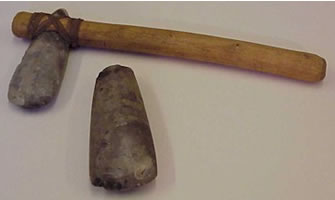Biogeochemical cycles
In Biology there is the concept of biogeochemical cycles. The planet is made up of a given amount of chemicals (atoms). The individual atoms stay the same but they combine in many different ways. They are in ongoing flux and are sometimes part of living things (the Bio bit) and sometimes part of non living things (the Geo bit).Think of nitrogen atoms in manure. They become part of the grass which is eaten by a cow which is eaten by me. I excrete some of the nitrogen at the foot of a rose bush which absorbs it to become part of a beautiful rose which I dead head and put in the compost to form manure.
 |
| Maize |
BUT, after six months, I would have cut my hair and fingernails many times and the building blocks for the new growth would have come from the maize and spinach that grew in my Juba garden. So most of my body was then made in Africa.
NOTE – all parts of the body get replaced on a regular cycle - even the blood and the bones. This raises the question of what constitutes me. If all the atoms get replaced then the only constant thing is the patterning – especially of the brain and thus the mind. And we all have experience of how changeable the mind can be.
Thay has several biogeochemical stories although he does not label them that way. I think for example of the lotus growing out of mud, of the piece of paper containing all the non-paper elements, and of various references to clouds and the water cycle when explaining interbeing.
The evolution of enlightenment?
In Buddhism there is the image of brushing the dust from the mirror mind such that the ‘true’ reality is exposed. It is there all along but it is obscured. There is also the image of being still to let the mental mud settle and thus to restore the ever-present, built-in clarity.From a neurological perspective this suggests that the brain is configured (genetically hard wired) to be ‘enlightened’ but that, for whatever reason, the potential is not realized because nurture (enculturation, brainwashing, education) puts too much ‘stuff’ into the attention centre.
The brain and its associated mind did not just happen. They evolved by natural selection. For millions of years the challenge was to be in a group of hunter gatherers that was more successful (fitter) than other groups. The key survival factors in the short term were likely to have been social ones related to meeting basics needs and drives – hierarchy, status and selection of mates. And there would have been two sets of variations; those dealing altruistically with in-group (us) situations and those dealing competitively with out-group (them) situations.
 |
| stone axe |
Then about 100,000 years ago there was a major change. The pre-frontal cortex expanded and language evolved. Functionalities and fashions took off on their exponential rise that still continues today. We moved from hunting and gathering to various patterns of agriculture and then to city states, empires and so on till today’s age of globalization.
Evolution tinkers. It does not wipe the slate clean and start again. The old parts of the brain are still with us – the parts that we share with fish, reptiles, mammals, primates and early hominids. The concept of perfection and pre-planned design do not apply. The human brain is a Heath Robinson device. The mind has a mind of its own. Much of what the unconscious churns out is nonsense.
Neural channels and switching on
I am tempted to think of the unenlightened mind as being caught in and limited to the ancestral neural channels. There is no need to view these as essentially brutal, selfish and red in tooth and claw. There might have been an element of this when dealing with the out-groups but that could have been overridden when dealing with the in-group. This raises the notion of brain regions and of triggers for switching them on and off.The brain’s job is to process incoming data from the various sense organs by relating it to memories. It can then figure how to behave so as to increase the good and reduce the bad - and thus to ensure the survival of ‘I’ and ‘Us’, and outperform ‘Them’.
And then there was the Axial Age (600 – 200BC). There was a lot of social and cultural upheaval at the time. In various parts of the world enlightened individuals gave rise to religions. The essence of this enlightenment was the idea that things are not as they seem. ‘Reality’ is mind made.
It was ‘as if’ a few individuals were abnormal in their brain structure. Unenlightened brains think and feel according to set patterns; and decisions are made in advance of their appearing in the conscious attention centre which is the home of the illusory ‘self’. Enlightened brains notice thoughts and feelings arising and keep a good distance from them. Stuff appears out of the unconscious, hangs around for a while and then disappears again. The stuff is noticed. It is mind made and has no abiding reality.
SO – enlightenment might have a neural basis. I could be that everyone has the genes for enlightenment. But by default, or perhaps by enculturation, the genes are switched off. But, by taking thought, it is possible to switch them on. It would be nice if it was possible on a massive scale to (a) switch on the in-group bits without switching on the out-group bits, and/or (b) expand the boundary for where the out-group begins – self, group, animals, plants and minerals.
Thay encourages people to develop compassion for minerals and he thus promotes deep ecology. He also talks of watering the good seeds and this accords with switching neural pathways on and off.
Biological Buddhism is about how to be in the world mindfully and responsibly. OM …
No comments:
Post a Comment